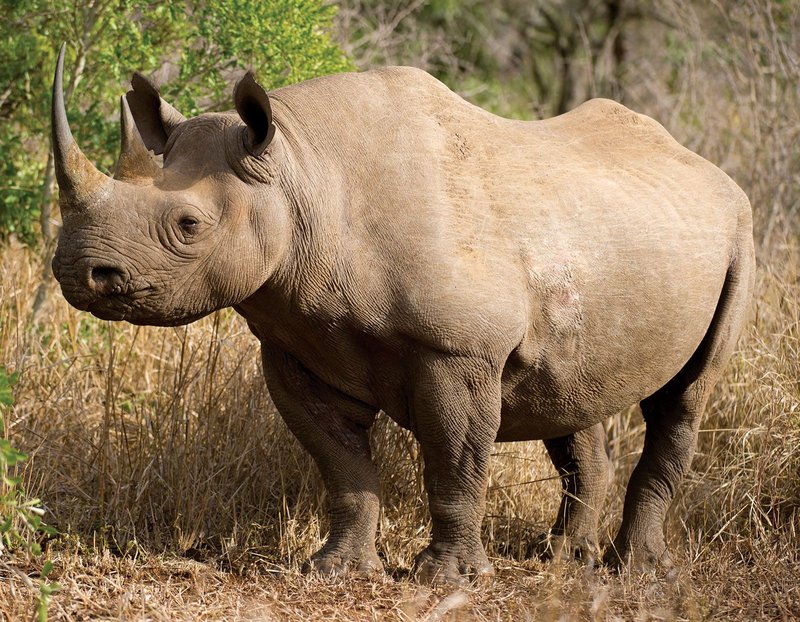
You might think of them as the tanks of the animal kingdom: sturdy, resilient, and capable of overcoming obstacles. Yet, their real story is one of adaptability and survival. Whether it’s the heat of the African plains or the dry regions of Asia, rhinos have some fascinating survival strategies up their sleeves. Let’s dive into how these magnificent creatures make it work in their tough environments.
1. The Thick Skin: Nature’s Armor
One of the most striking features of rhinoceroses is their thick skin. This tough exterior isn’t just for show; it serves several crucial purposes. First off, it protects them from the sun. Think of their skin as nature’s sunscreen—a barrier that shields them from the intense rays that beat down in their native habitats. Without it, they would be vulnerable to sunburn and skin infections.
But that’s not all. Their skin is also surprisingly sensitive. It contains nerve endings that allow rhinos to feel even the slightest touch, making them aware of their surroundings. This sensitivity helps them navigate through their environments—whether it’s avoiding dangerous plants or staying alert for potential threats. So, while their skin appears hard, it’s really a smart survival tool that balances protection with awareness.
2. Water: The Essential Lifeline
Rhinoceroses are known to be big drinkers, and for a good reason. In harsh environments, access to water is often limited, making it a precious resource. Rhinos spend a significant portion of their day wallowing in mud or water, which serves multiple purposes. This behavior cools them down, especially during scorching days, and also helps them get rid of pesky parasites.
Imagine diving into a refreshing pool on a hot day; that’s how essential water is for rhinos. By wallowing, they also build up a layer of mud that acts as sunscreen and insect repellent. So, when you see a rhino happily splashing around, it’s not just for fun—it’s a vital part of their survival strategy.
3. Grazing Habits: Adapting to the Environment
Rhinoceroses are herbivores, meaning they have to rely on plants for food. This presents a challenge, especially in dry or semi-arid regions. Their grazing habits have adapted to ensure they can thrive. While some rhinos are browsers, snacking on leaves and branches, others are grazers who prefer grasses. Their wide mouths and sharp lips are designed for efficiency.
Here’s the thing: not all plants are created equal. They know which plants are nutritious and which are tough to digest. By selecting specific types of vegetation, rhinos can maximize their nutrient intake, fortifying them for survival. This selective eating allows them to cope with the fluctuating availability of food, ensuring they get the sustenance they need to thrive.
4. Social Structures: Safety in Numbers
You might be surprised to learn that rhinoceroses are not solitary creatures, despite their tough exterior. Many species participate in social behaviors that enhance their survival. For instance, white rhinos often form small groups, offering them safety in numbers. By sticking together, they can better protect each other from predators, such as lions or hyenas.
Their social interactions also help them communicate, establishing territories and recognizing one another. It’s like having a built-in support system. This social structure offers not just safety but also emotional support, which can be vital in challenging environments. When faced with threats or harsh conditions, having companions can make a world of difference.
5. Adaptation to Climate: A Survival Strategy
Rhinoceroses have a remarkable ability to adapt to the varying climates they face. From the hot savannas of Africa to the more temperate zones of Asia, these animals adjust their behaviors and routines accordingly. For instance, during the day, you might find them resting in the shade to avoid the heat. In contrast, they are more active during cooler hours, like early morning or late afternoon.
What’s even more interesting is how their bodies have adapted to conserve water. When temperatures soar, rhinos can reduce their activity levels, allowing them to survive on less water. This ability to adjust contributes significantly to their survival, especially in areas where water is scarce. It’s like adjusting your daily routine to stay comfortable; rhinos naturally know how to make the best of their circumstances.
6. Threats and Conservation: The Struggle for Survival
Despite their impressive survival strategies, rhinoceroses face numerous threats that put their very existence at risk. Poaching for their horns and habitat loss due to human activities have become significant challenges. These threats are harsh realities that can push species to the brink of extinction.
Conservation efforts are crucial in helping these magnificent animals survive. Protecting their habitats, establishing anti-poaching laws, and raising awareness about their plight are essential steps to ensure they can continue thriving in the wild. It’s a difficult battle, but every effort counts in preserving the future of rhinoceroses.
Closing Thoughts: Resilience in the Face of Adversity
Rhinoceroses are powerful symbols of resilience. Their ability to thrive in harsh environments, from their thick skin to their communal living, showcases the incredible adaptations that nature can produce. While they face ongoing challenges, understanding how they survive gives us a greater appreciation for these magnificent creatures. As we continue to learn about and protect them, we can ensure that future generations will witness the majesty of rhinos in the wild.
In the grand tapestry of nature, rhinos remind us that survival often requires innovation and adaptability. Whenever you hear about these majestic animals, think about their incredible journey and the struggles they face. They truly are a testament to the strength of life in the wild.

